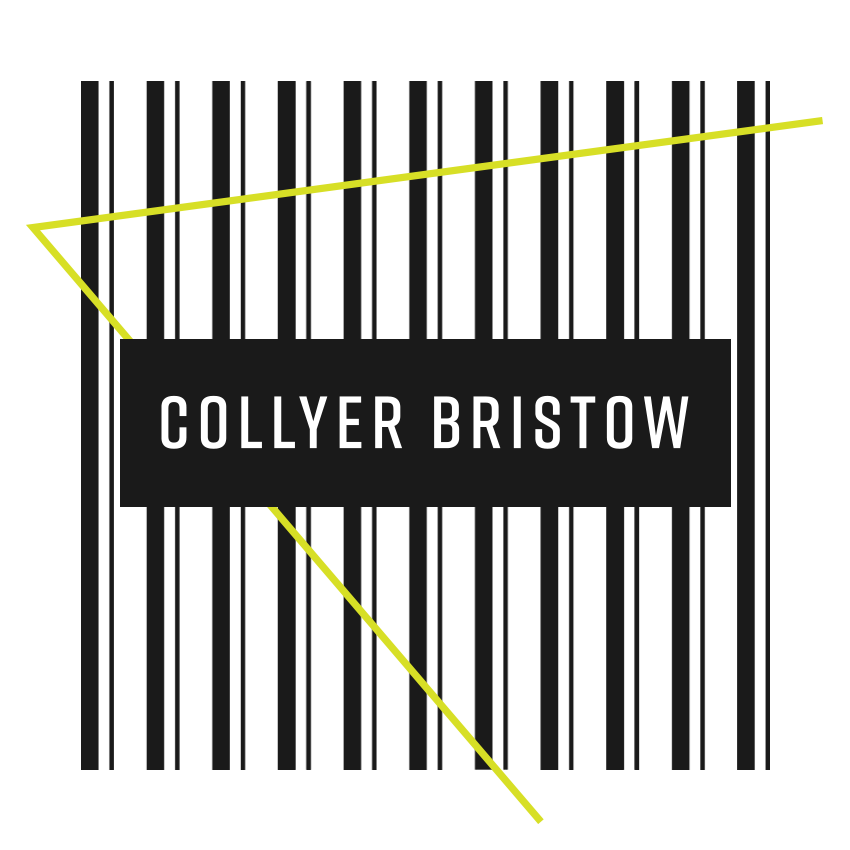- Banking & financial disputes

Longer Reads
FX client obtains pre-action disclosure order against bank in front-running claim
4 minute read
Published 22 January 2018
Key information
- Specialisms
- Dispute Resolution
- Services
- Banking & financial disputes
In the case of The ECU Group plc v HSBC Bank plc[i], the High Court has held that an applicant was entitled to pre-action disclosure where there was the question of an expired limitation period.
Facts
ECU is a currency debt management company, which manages loan facilities in multiple currencies for its clients. ECU had a long-standing relationship with HSBC, which provided the service of placing “stop-loss” orders for ECU. This was a form of currency damage-limitation, whereby if a pair of currencies ECU was dealing with rose above an acceptable level, the order would be triggered and the currencies would be bought/sold by HSBC to avoid further losses for ECU.
In January 2006, ECU placed three substantial stop-loss orders, the largest being a buy order for almost CAD$250m, with a sell order for the corresponding amount of Japanese Yen. Before all of these trades were placed, the corresponding rates were falling, which would have generated a profit for ECU. Instead, the rates reversed shortly after the orders were placed, causing all of the orders to be triggered. According to ECU, it was an extremely unusual sequence of events for each of these trades to move significantly against ECU in an unexpected direction and so quickly after the orders had been placed. Further, the relevant rates dropped once the orders had been activated, rather than continuing to rise. ECU believed that this apparent volatility in the three different markets, right after it had placed orders, was more than just a coincidence.
For these reasons, ECU suspected that HSBC had manipulated the market by buying and selling to artificially raise the rates, causing the stop-loss orders to be triggered. So long as HSBC had secured its positions, this “front-running” would generate large profits for HSBC at the expense of ECU and its clients. ECU calculated that the total losses to its clients as a result of the stop-loss orders being triggered was £6.17m. Since ECU would have earned a 20% fee on a profitable trade, its losses were £1.234m.
ECU sent a letter to HSBC on 1 February 2006, asking about the extent to which HSBC benefitted from buying ahead of the stop-loss orders. HSBC replied after what was said to have been a full investigation of the case, stating that there had been no front-running, and there was no evidence of any other wrongdoing. ECU was not satisfied but did not feel that it could take the matter any further.
However, in July 2016, the US Department of Justice issued a formal indictment against two HSBC traders for front-running committed at the expense of one of HSBC’s clients. As with ECU, the client complained, but HSBC stated that there had been no wrongdoing. HSBC’s flawed internal investigations then came to light and HSBC was fined $175m for FX abuse by the US Federal Reserve. HSBC has also been fined £216m by the FCA for front-running and abuse of stop-loss orders, and $275m by the New York Commodity, Futures and Trading Commission for similar conduct.
ECU reconsidered its position once these findings came to light. However, ECU still did not know what trades HSBC had made around the time of the stop-loss orders being placed, and the consequences of these trades. Furthermore, the action was now time-barred unless HSBC was guilty of fraud or had deliberately concealed the facts. ECU applied for pre-action disclosure of the trade data, communications between the traders, and documents relating to the investigations in 2006.
The Law
Civil Procedure Rule 31.16 provides that the court has the discretion to order pre-action disclosure if:
- The applicant and the respondent are likely to be parties to subsequent proceedings;
- Had proceedings already started, the respondent’s duty by way of standard disclosure would extend to the documents that the applicant seeks disclosure of; and
- Pre-action disclosure would facilitate:
- Disposing fairly of the anticipated proceedings;
- Assisting the dispute to be resolved without proceedings; or
- Saving costs.
Black v Sumitomo[ii] was referenced as the leading case on pre-action disclosure.
Held
Jurisdiction
The court considered that the jurisdictional threshold, contained within CPR 31.16, had been met. The court stated that “it cannot be said that it is inconceivable that HSBC could be liable”, following the regulatory findings in the US in 2016. In its view, pre-action disclosure would either indicate front-running had occurred, which would likely lead to a settlement or a narrowing of the issues between the parties, thereby saving costs. In the alternative, if no front-running was evident from the documents, ECU would find it difficult to justify further action, thus disposing of the case fairly.
Discretion
Turning to the merits of the application, the judge considered that the claim was more than speculative since it was backed up by the findings of the US Department of Justice, US Federal Reserve and FCA of precisely the sort of conduct that ECU sought to allege against HSBC.
Although HSBC’s limitation defence was an issue, it was not fatal to the claim, and should simply be considered as a factor when exercising the court’s discretion. From HSBC’s recent conduct, it could not be assumed that HSBC had not deliberately concealed any front-running. In fact, ECU had been “put off the scent” by HSBC in its reply to ECU’s letter, thus meaning that it had not discovered the wrongdoing in 2006.
Documents that were ordered to be disclosed
The court ordered disclosure of Bloomberg messages, emails and relevant trade data from a limited time period around the times that the trades were made. It further ordered the disclosure of compliance documents relating to the 2006 investigation after ECU’s letter.
The court stated that where the scope of the documents requested was too wide, it might have prevented the jurisdictional threshold being reached. However, this was not the case here, and even in such a case, the court did have the power to adjust the categories of disclosure, whether to deal with issues of scope or availability.
Comment
This decision is an indication of the courts’ reluctance now to take a bank’s assertion that it had not deliberately concealed misconduct at face value. The effect of the bank’s behaviour during the Financial Crisis and the subsequent regulatory findings against it was clearly to weaken the assumption in the mind of the court that the bank could not have been guilty of wrongdoing.
While this case largely applied the same pre-action disclosure principles from the Sumitomo litigation, two points of interest emerge from the decision:
- Pre-action disclosure applications may fail due to the drafting of the request for documents being too wide. The court does have the power to amend the categories of documents to deal with any issues which come to light during the applications, but great care still needs to be taken in drafting such applications.
- HHJ Waksman stated that there is no “rule to the effect that where there is this kind of dispute on limitation in the context of an application for pre-action disclosure, the proper approach is to dismiss it and let the proceedings take their course”. The limitation dispute was a factor to be weighed in the balance, though it is “far from an overwhelming or compelling factor”.
Related content
Longer Reads
FX client obtains pre-action disclosure order against bank in front-running claim
Published 22 January 2018
Associated sectors / services
Authors
In the case of The ECU Group plc v HSBC Bank plc[i], the High Court has held that an applicant was entitled to pre-action disclosure where there was the question of an expired limitation period.
Facts
ECU is a currency debt management company, which manages loan facilities in multiple currencies for its clients. ECU had a long-standing relationship with HSBC, which provided the service of placing “stop-loss” orders for ECU. This was a form of currency damage-limitation, whereby if a pair of currencies ECU was dealing with rose above an acceptable level, the order would be triggered and the currencies would be bought/sold by HSBC to avoid further losses for ECU.
In January 2006, ECU placed three substantial stop-loss orders, the largest being a buy order for almost CAD$250m, with a sell order for the corresponding amount of Japanese Yen. Before all of these trades were placed, the corresponding rates were falling, which would have generated a profit for ECU. Instead, the rates reversed shortly after the orders were placed, causing all of the orders to be triggered. According to ECU, it was an extremely unusual sequence of events for each of these trades to move significantly against ECU in an unexpected direction and so quickly after the orders had been placed. Further, the relevant rates dropped once the orders had been activated, rather than continuing to rise. ECU believed that this apparent volatility in the three different markets, right after it had placed orders, was more than just a coincidence.
For these reasons, ECU suspected that HSBC had manipulated the market by buying and selling to artificially raise the rates, causing the stop-loss orders to be triggered. So long as HSBC had secured its positions, this “front-running” would generate large profits for HSBC at the expense of ECU and its clients. ECU calculated that the total losses to its clients as a result of the stop-loss orders being triggered was £6.17m. Since ECU would have earned a 20% fee on a profitable trade, its losses were £1.234m.
ECU sent a letter to HSBC on 1 February 2006, asking about the extent to which HSBC benefitted from buying ahead of the stop-loss orders. HSBC replied after what was said to have been a full investigation of the case, stating that there had been no front-running, and there was no evidence of any other wrongdoing. ECU was not satisfied but did not feel that it could take the matter any further.
However, in July 2016, the US Department of Justice issued a formal indictment against two HSBC traders for front-running committed at the expense of one of HSBC’s clients. As with ECU, the client complained, but HSBC stated that there had been no wrongdoing. HSBC’s flawed internal investigations then came to light and HSBC was fined $175m for FX abuse by the US Federal Reserve. HSBC has also been fined £216m by the FCA for front-running and abuse of stop-loss orders, and $275m by the New York Commodity, Futures and Trading Commission for similar conduct.
ECU reconsidered its position once these findings came to light. However, ECU still did not know what trades HSBC had made around the time of the stop-loss orders being placed, and the consequences of these trades. Furthermore, the action was now time-barred unless HSBC was guilty of fraud or had deliberately concealed the facts. ECU applied for pre-action disclosure of the trade data, communications between the traders, and documents relating to the investigations in 2006.
The Law
Civil Procedure Rule 31.16 provides that the court has the discretion to order pre-action disclosure if:
- The applicant and the respondent are likely to be parties to subsequent proceedings;
- Had proceedings already started, the respondent’s duty by way of standard disclosure would extend to the documents that the applicant seeks disclosure of; and
- Pre-action disclosure would facilitate:
- Disposing fairly of the anticipated proceedings;
- Assisting the dispute to be resolved without proceedings; or
- Saving costs.
Black v Sumitomo[ii] was referenced as the leading case on pre-action disclosure.
Held
Jurisdiction
The court considered that the jurisdictional threshold, contained within CPR 31.16, had been met. The court stated that “it cannot be said that it is inconceivable that HSBC could be liable”, following the regulatory findings in the US in 2016. In its view, pre-action disclosure would either indicate front-running had occurred, which would likely lead to a settlement or a narrowing of the issues between the parties, thereby saving costs. In the alternative, if no front-running was evident from the documents, ECU would find it difficult to justify further action, thus disposing of the case fairly.
Discretion
Turning to the merits of the application, the judge considered that the claim was more than speculative since it was backed up by the findings of the US Department of Justice, US Federal Reserve and FCA of precisely the sort of conduct that ECU sought to allege against HSBC.
Although HSBC’s limitation defence was an issue, it was not fatal to the claim, and should simply be considered as a factor when exercising the court’s discretion. From HSBC’s recent conduct, it could not be assumed that HSBC had not deliberately concealed any front-running. In fact, ECU had been “put off the scent” by HSBC in its reply to ECU’s letter, thus meaning that it had not discovered the wrongdoing in 2006.
Documents that were ordered to be disclosed
The court ordered disclosure of Bloomberg messages, emails and relevant trade data from a limited time period around the times that the trades were made. It further ordered the disclosure of compliance documents relating to the 2006 investigation after ECU’s letter.
The court stated that where the scope of the documents requested was too wide, it might have prevented the jurisdictional threshold being reached. However, this was not the case here, and even in such a case, the court did have the power to adjust the categories of disclosure, whether to deal with issues of scope or availability.
Comment
This decision is an indication of the courts’ reluctance now to take a bank’s assertion that it had not deliberately concealed misconduct at face value. The effect of the bank’s behaviour during the Financial Crisis and the subsequent regulatory findings against it was clearly to weaken the assumption in the mind of the court that the bank could not have been guilty of wrongdoing.
While this case largely applied the same pre-action disclosure principles from the Sumitomo litigation, two points of interest emerge from the decision:
- Pre-action disclosure applications may fail due to the drafting of the request for documents being too wide. The court does have the power to amend the categories of documents to deal with any issues which come to light during the applications, but great care still needs to be taken in drafting such applications.
- HHJ Waksman stated that there is no “rule to the effect that where there is this kind of dispute on limitation in the context of an application for pre-action disclosure, the proper approach is to dismiss it and let the proceedings take their course”. The limitation dispute was a factor to be weighed in the balance, though it is “far from an overwhelming or compelling factor”.
Associated sectors / services
- Banking & financial disputes
Authors
Need some more information? Make an enquiry below.
Subscribe
Please add your details and your areas of interest below
Article contributor
Robin
HenryPartner - Head of Dispute Resolution Services
Specialising in Banking & financial disputes, Commercial disputes, Corporate recovery, restructuring & insolvency, Financial regulatory, Financial Services and Personal insolvency
Enjoy reading our articles? why not subscribe to notifications so you’ll never miss one?
Subscribe to our articlesMessage us on WhatsApp (calling not available)
Please note that Collyer Bristow provides this service during office hours for general information and enquiries only and that no legal or other professional advice will be provided over the WhatsApp platform. Please also note that if you choose to use this platform your personal data is likely to be processed outside the UK and EEA, including in the US. Appropriate legal or other professional opinion should be taken before taking or omitting to take any action in respect of any specific problem. Collyer Bristow LLP accepts no liability for any loss or damage which may arise from reliance on information provided. All information will be deleted immediately upon completion of a conversation.
Close









































































